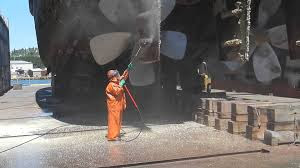Mountains in the Book of Mormon
I’ve pointed out that the first time mountains are even mentioned as existing in the New World is in Helaman 11. Even then, the “mountains” are such that the robbers can “sally forth” out of them, which I infer means the mountains were not all that high. Prior to Helaman 11, references to mountains are quotations from or allusions to the scriptures; i.e., the Old Testament.
I’ve also observed that D&C 117:8 refers to “mountains” in Missouri:
“Is there not room enough on the mountains of Adam-ondi-Ahman, and on the plains of Olaha Shinehah, or the land where Adam dwelt, that you should covet that which is but the drop, and neglect the more weighty matters?”
Some have pointed to the prophecies of Samuel the Lamanite regarding mountains:
Helaman 14:23
“23 And behold, there shall be great tempests, and there shall be many mountains laid low, like unto a valley, and there shall be many places which are now called valleys which shall become mountains, whose height is great.”
However, when the destruction is described in 3 Nephi, no such mountains are mentioned. 3 Nephi 8:10 says a “great mountain” was formed when “the earth was carried up upon the city of Moronihah.” This is earth coming from above–upon–the city, not emerging from below. (We think this is an example of a massive sand blow, a typical earthquake feature in the Midwest.) Samuel’s prophecy was surely fulfilled, but not all in Book of Mormon territory.
IOW, once we set aside the Mesomania-inspired traditions, the scriptures do not describe lots of big mountains in Book of Mormon lands.
Instead, the text describes relatively low, habitable mountains that many of us would call hills.
Along these lines, it’s interesting to read what Joseph Smith once wrote about the “mountains of Missouri.” Those who have visited Missouri know what those mountains are like.
They’re like the ones in Illinois.
And they’re like the ones described in the Book of Mormon text.
This reference to mountains is from a sermon attributed to Joseph Smith, recorded by Martha Coray. It is dated July 11 (or 19) 1840, but was almost certainly recorded well after that date. Perhaps it was copied from an earlier notebook.
“I prophecy that the time shall be when these saints shall ride proudly over the mountains of Missouri and no Gentile dog nor Missouri dog shall dare lift a tongue against them but will lick up the dust from beneath their feet.”
https://dcms.lds.org/delivery/DeliveryManagerServlet?dps_pid=IE2059347
Image MS 1998_f0001_00022.jpg.
Source: Book of Mormon Concensus




